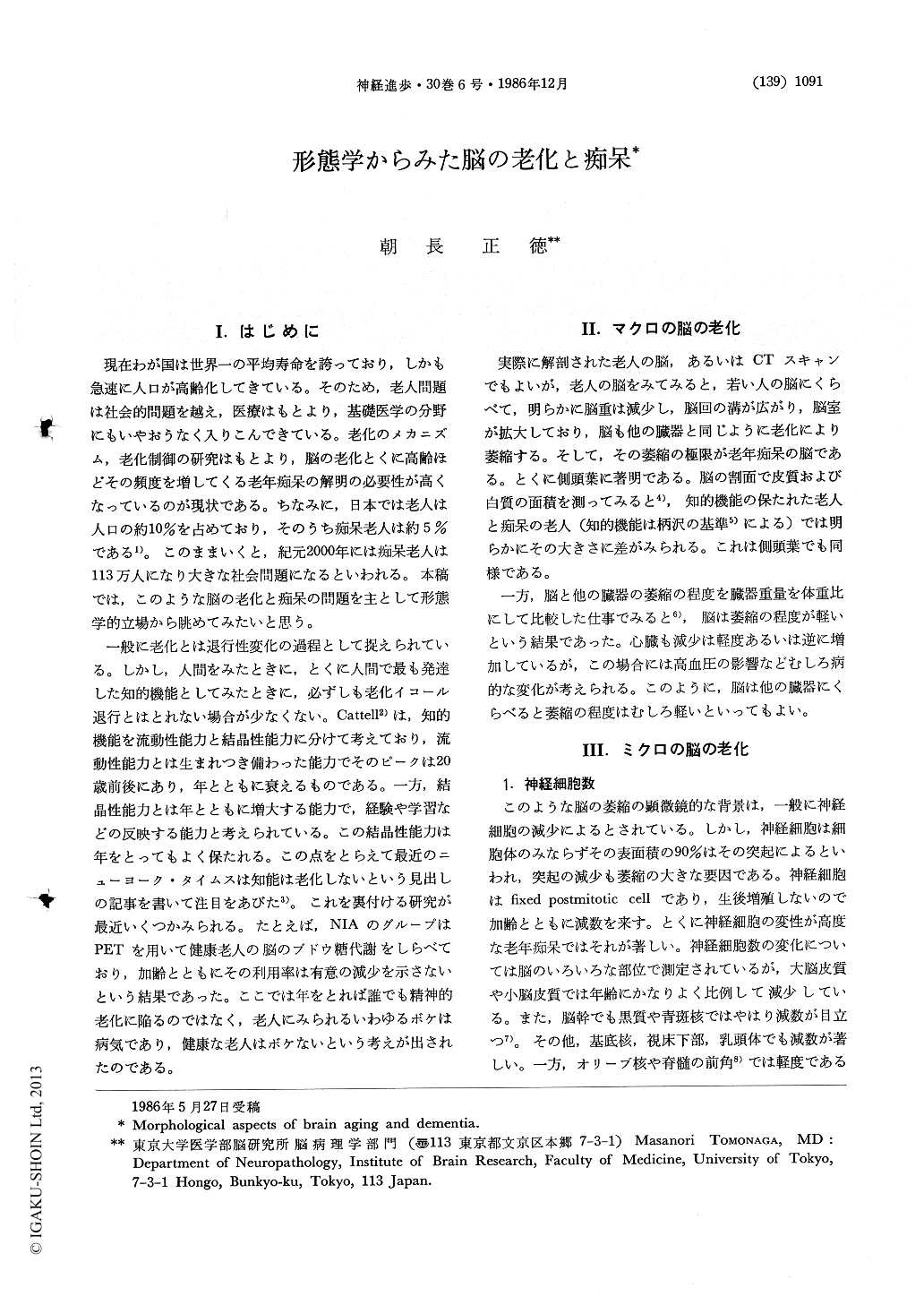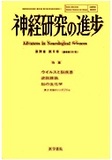Japanese
English
- 有料閲覧
- Abstract 文献概要
- 1ページ目 Look Inside
I.はじめに
現在わが国は世界一の平均寿命を誇っており,しかも急速に人口が高齢化してきている。そのため,老人問題は社会的問題を越え,医療はもとより,基礎医学の分野にもいやおうなく入りこんできている。老化のメカニズム,老化制御の研究はもとより,脳の老化とくに高齢ほどその頻度を増してくる老年痴呆の解明の必要性が高くなっているのが現状である。ちなみに,日本では老人は人口の約10%を占めており,そのうち痴呆老人は約5%である1)。このままいくと,紀元2000年には痴呆老人は113万人になり大きな社会問題になるといわれる。本稿では,このような脳の老化と痴呆の問題を主として形態学的立場から眺めてみたいと思う。
一般に老化とは退行性変化の過程として捉えられている。しかし,人間をみたときに,とくに人間で最も発達した知的機能としてみたときに,必ずしも老化イコール退行とはとれない場合が少なくない。Cattell2)は,知的機能を流動性能力と結晶性能力に分けて考えており,流動性能力とは生まれつき備わった能力でそのピークは20歳前後にあり,年とともに衰えるものである。一方,結晶性能力とは年とともに増大する能力で,経験や学習などの反映する能力と考えられている。この結晶性能力は年をとってもよく保たれる。
By increasing population of the aged people, the problem on brain aging and dementia becomes an important target of neuroscience, especially in the Western countries and Japan. Formerly, the brain aging has been thought to be a process of involution. However, in human, the intelligence does not always decline in senescence. Recent idea on the intellectual ability is reverse: it remains well in the healthy aged persons, espe-cially the crystallized intelligence after Cattell (1943). By the study with PET, it is known that the utilization of glucose in the brain did not significantly decrease with age.
We presented here the macroscopical and histo-logical changes of the aged human brain firstly, the regenerative capacity of the cultured aged neurons secondly, and the pathological changes of the brain from senile dementia of Alzheimer's type thirdly.

Copyright © 1986, Igaku-Shoin Ltd. All rights reserved.


